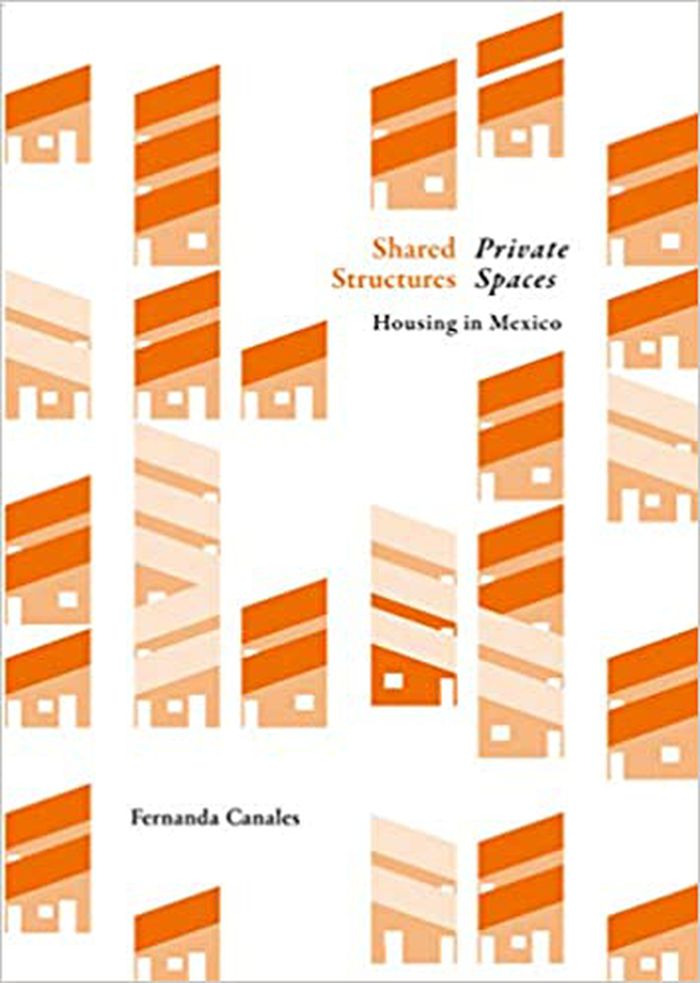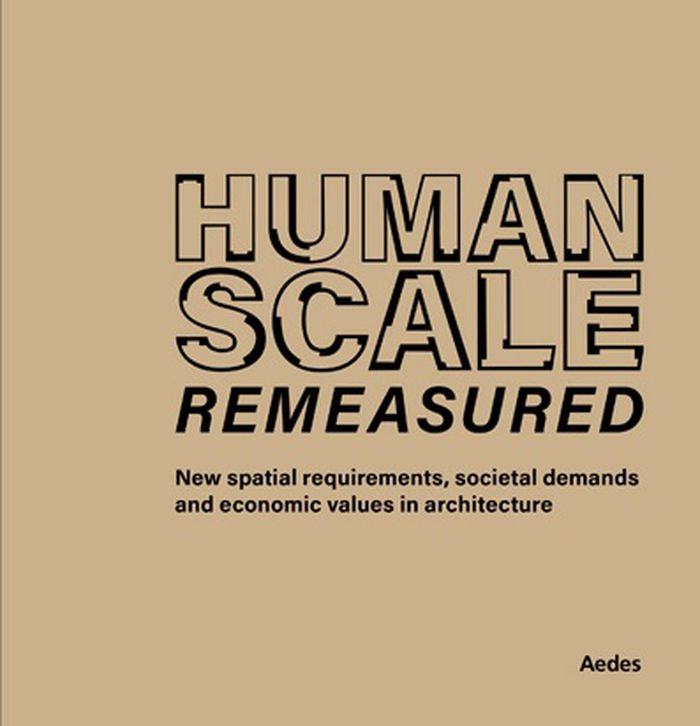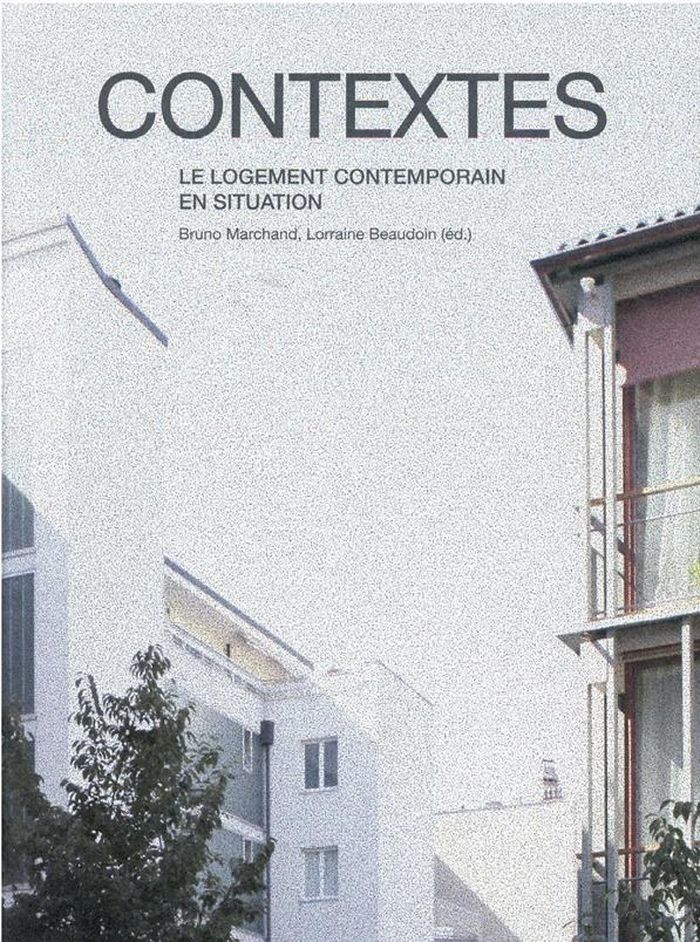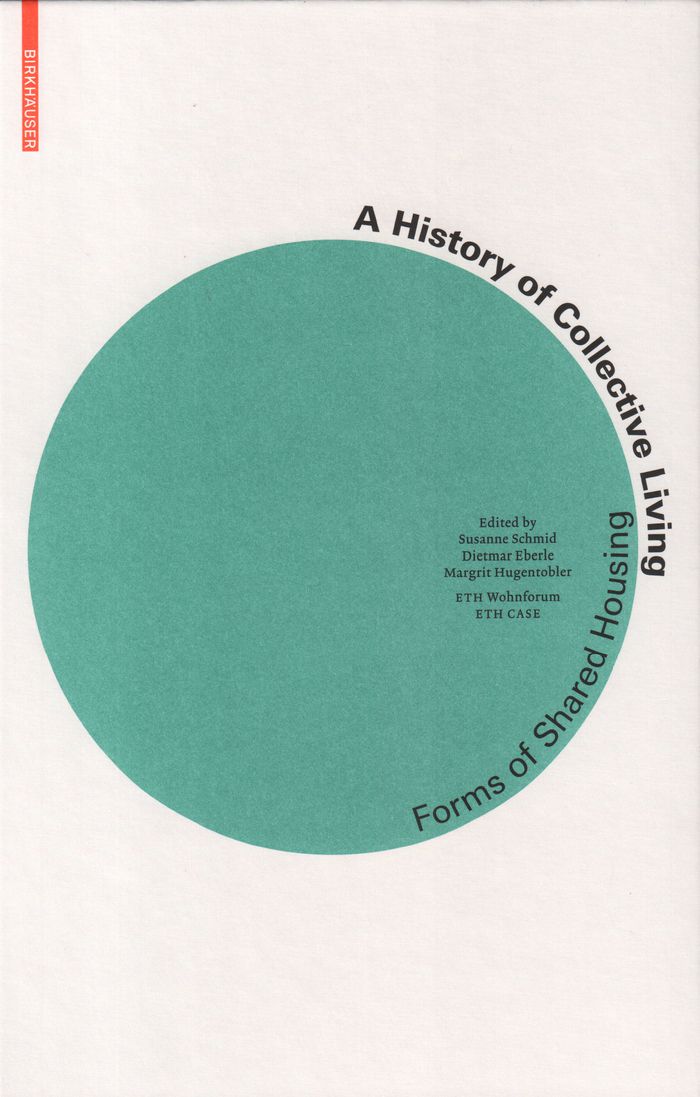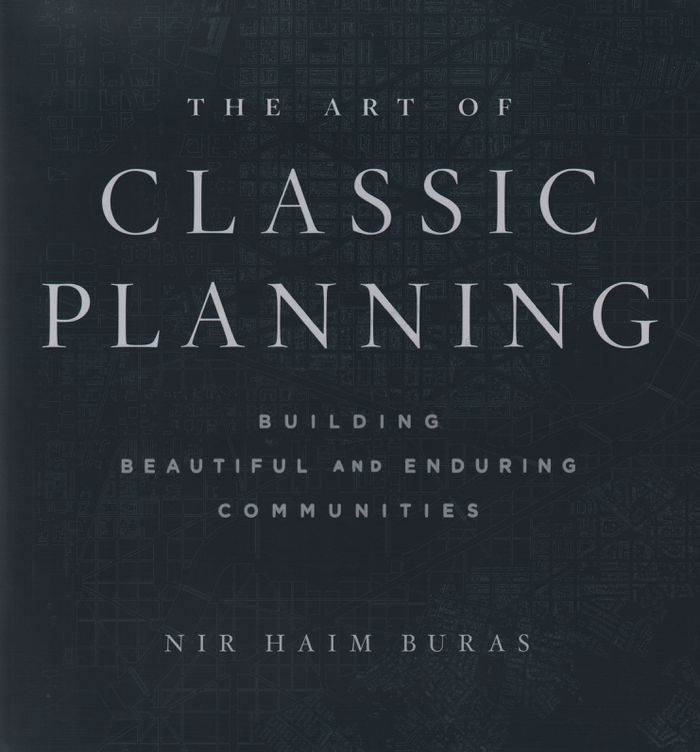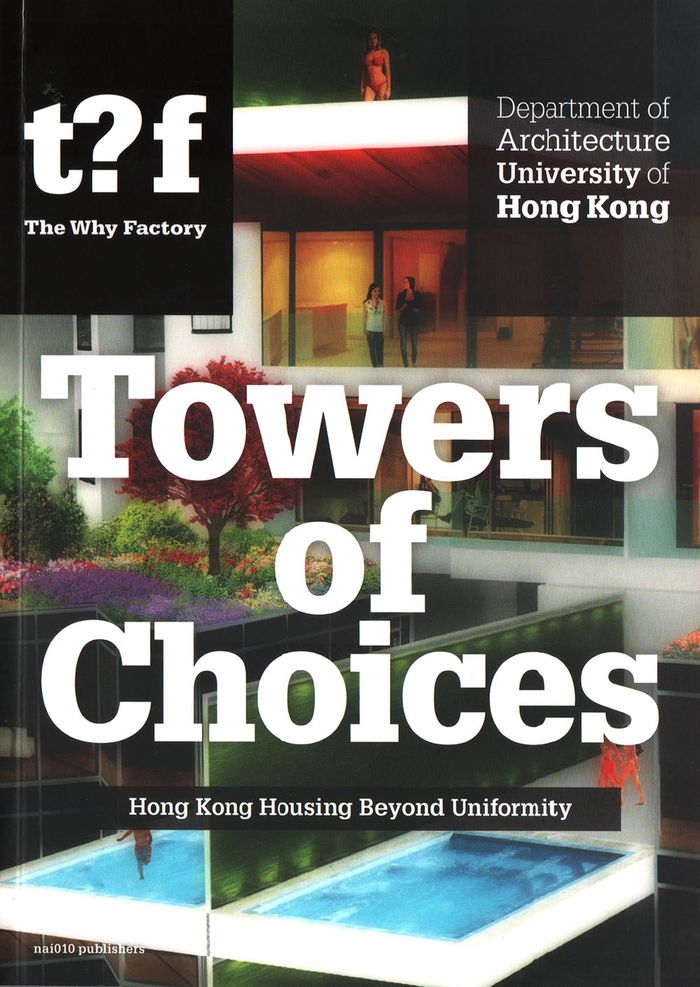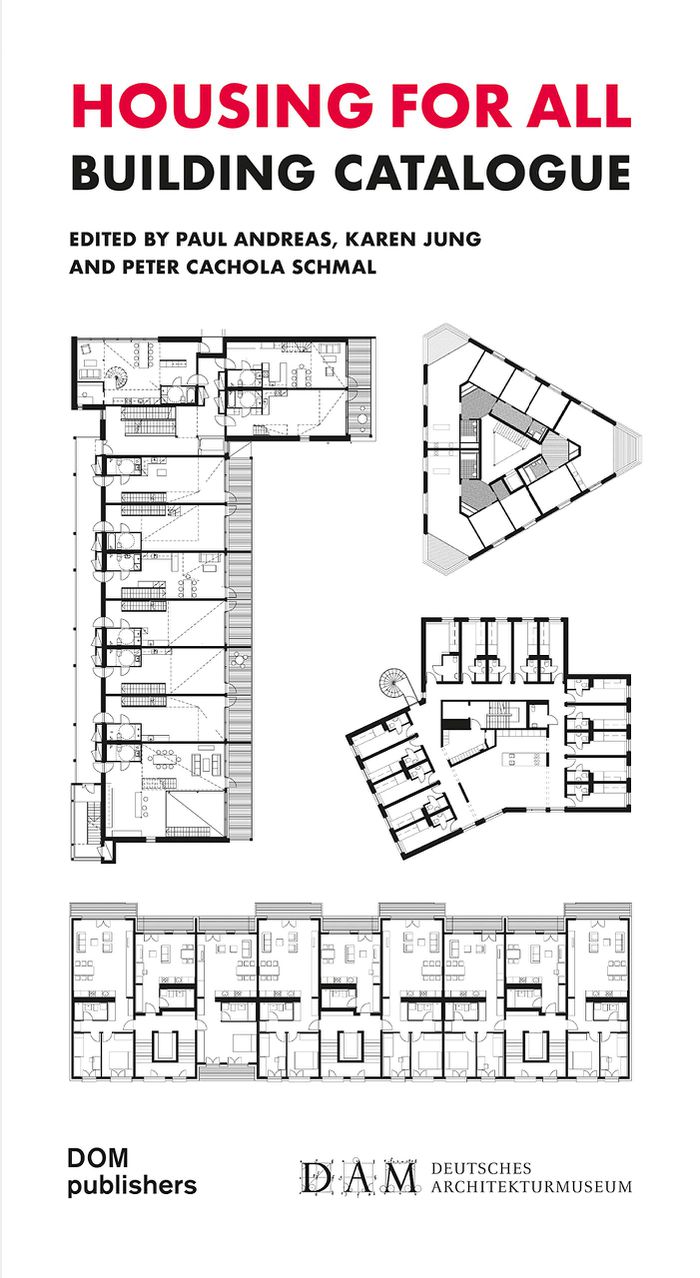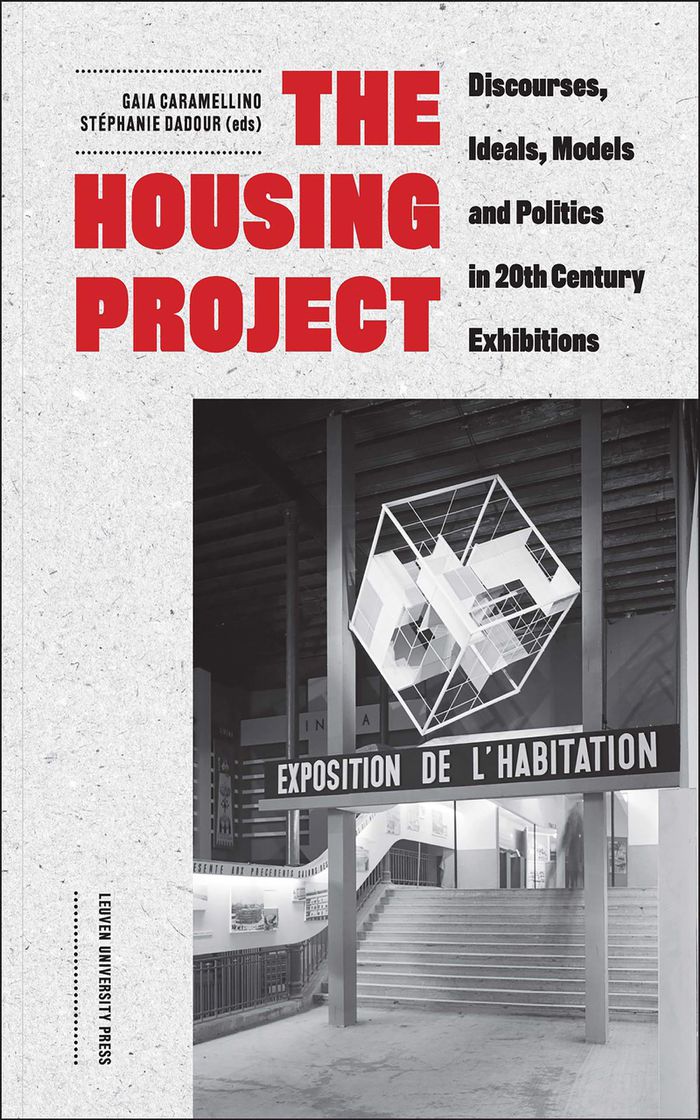$60.00
(disponible sur commande)
Résumé:
The geographic, social, and economic diversity of Mexico constitute a prime example of the challenges inherent to meeting individual needs in an increasingly crowded world. The drawings and essays comprise new ways of looking at theories and buildings in order to redefine the connection between housing and the city. This research is centered in drawings of 70 housing(...)
Shared structures, intimate space: housing in Mexico
Actions:
Prix:
$60.00
(disponible sur commande)
Résumé:
The geographic, social, and economic diversity of Mexico constitute a prime example of the challenges inherent to meeting individual needs in an increasingly crowded world. The drawings and essays comprise new ways of looking at theories and buildings in order to redefine the connection between housing and the city. This research is centered in drawings of 70 housing projects, creating a common language highlighting different attempts at reinventing the house not as an isolated battle but as part of a strategy for reimagining how we want to live. This book showcases the pivotal voices that have shaped major cities through housing projects and explores how policies and ideas transform into built form, and how in turn buildings shape societies.
Logements collectifs
Human scale remeasured
$25.00
(disponible sur commande)
Résumé:
''Human scale remeasured'' draws attention to a new holistic economic evaluation of society, resilience and sustainability as a factor of value concerning the built environment now and in the future. Human demands in architecture and urban design emphasise the needs of both individuals and the society in relation to urban and spatial developments. This publication(...)
Human scale remeasured
Actions:
Prix:
$25.00
(disponible sur commande)
Résumé:
''Human scale remeasured'' draws attention to a new holistic economic evaluation of society, resilience and sustainability as a factor of value concerning the built environment now and in the future. Human demands in architecture and urban design emphasise the needs of both individuals and the society in relation to urban and spatial developments. This publication presents 15 exemplary international projects in combination with in-depth essays and short abstracts which apply socio-economic coherence and democratic principles in the design of collective habitats.
Logements collectifs
$72.95
(disponible sur commande)
Résumé:
Les années 2000 ont marqué un tournant particulier dans la production de logements collectifs en Suisse en s’orientant vers des recherches formelles et spatiales inédites. Ce phénomène de singularisation semble répondre aux profondes mutations du territoire induites par la densification sur l’intérieur, qui implique de construire dans des situations toujours plus(...)
Contextes : le logement contemporain en situation
Actions:
Prix:
$72.95
(disponible sur commande)
Résumé:
Les années 2000 ont marqué un tournant particulier dans la production de logements collectifs en Suisse en s’orientant vers des recherches formelles et spatiales inédites. Ce phénomène de singularisation semble répondre aux profondes mutations du territoire induites par la densification sur l’intérieur, qui implique de construire dans des situations toujours plus complexes et a engendré de nouveaux «contextes» à habiter. Cet ouvrage propose de mettre en évidence l’évolution des tendances conceptuelles et modalités de relation à ces « contextes », à travers les réflexions de plusieurs contributeurs et la constitution d’une iconographie qui donne à voir ou à revoir l’architecture du logement après que la végétation a poussé et que les habitants se soient appropriés les lieux.
Logements collectifs
$77.50
(disponible sur commande)
Résumé:
This book explores the planning, technical, financial, health-based and social background for developing multi-generational homes and co-living. Abundantly illustrated with case studies and plans from projects across the UK and abroad, this book informs and inspires the delivery of alternative approaches to affordable and flexible housing.
Radical housing: designing multi-generational and co-living housing for all
Actions:
Prix:
$77.50
(disponible sur commande)
Résumé:
This book explores the planning, technical, financial, health-based and social background for developing multi-generational homes and co-living. Abundantly illustrated with case studies and plans from projects across the UK and abroad, this book informs and inspires the delivery of alternative approaches to affordable and flexible housing.
Logements collectifs
$49.95
(disponible sur commande)
Résumé:
L'habitat participatif a pour objet concret le « mieux construire » et le « mieux vivre ». Cet ouvrage présente un large panel d'acteurs qui ont contribué à son essor en France, en le faisant passer du monde des pionniers à celui du logement pour tous. L'habitat participatif se développe d'autant plus rapidement qu'il répond à l'urgence de la transition climatique dans(...)
Le tour de France des acteurs de l'habitat participatif
Actions:
Prix:
$49.95
(disponible sur commande)
Résumé:
L'habitat participatif a pour objet concret le « mieux construire » et le « mieux vivre ». Cet ouvrage présente un large panel d'acteurs qui ont contribué à son essor en France, en le faisant passer du monde des pionniers à celui du logement pour tous. L'habitat participatif se développe d'autant plus rapidement qu'il répond à l'urgence de la transition climatique dans ses trois dimensions économique, environnementale et humaine. Grâce à une quarantaine d'entretiens (accompagnateurs de groupes, architectes, habitants...), l'ouvrage permet de faire connaissance avec la plupart de ces acteurs et repère les principaux pôles d'expertises existant sur le territoire métropolitain. Ce livre constitue à la fois un précieux carnet d'adresses et une cartographie précise des réseaux associatifs concernés. Il est une référence pour les familles et les personnes en recherche de futurs voisins, d'un quartier ou d'un site et d'un accompagnement technique avisé.
Logements collectifs
$64.50
(disponible sur commande)
Résumé:
The book tells the story of communal living from about 1850 until today. Three motives of sharing - the economic, political and social intention - divide the residential objects, which are investigated in a historical analysis and allocated to nine development phases.The author investigates and compares different forms of housing and the way they developed from their(...)
Logements collectifs
octobre 2019
The story of communal living: models of urban coexistence
Actions:
Prix:
$64.50
(disponible sur commande)
Résumé:
The book tells the story of communal living from about 1850 until today. Three motives of sharing - the economic, political and social intention - divide the residential objects, which are investigated in a historical analysis and allocated to nine development phases.The author investigates and compares different forms of housing and the way they developed from their origins until today; she illustrates how everyday shared living and the degrees of privacy in housing are practiced in Europe.
Logements collectifs
$145.00
(disponible sur commande)
Résumé:
Inspired by venerable cities like Kyoto, Vienna, and Venice, and by the great successes of L’Enfant’s Washington, Haussmann’s Paris, and Burnham’s Chicago, Buras combines theory and a host of examples to arrive at clear guidelines for best practices in classic planning for today’s world. The Art of Classic Planning celebrates the enduring principles of urban design and(...)
The art of classic planning: building beautiful and enduring communities
Actions:
Prix:
$145.00
(disponible sur commande)
Résumé:
Inspired by venerable cities like Kyoto, Vienna, and Venice, and by the great successes of L’Enfant’s Washington, Haussmann’s Paris, and Burnham’s Chicago, Buras combines theory and a host of examples to arrive at clear guidelines for best practices in classic planning for today’s world. The Art of Classic Planning celebrates the enduring principles of urban design and invites us to return to building beautiful cities.
Logements collectifs
$39.95
(disponible sur commande)
Résumé:
Here, architects and urban planners explore innovative design concepts and creative solutions to combat the architectural uniformity of Hong Kong resulting from strict housing regulations and increasing population density.
Towers of choices: Hong Kong housing beyond uniformity
Actions:
Prix:
$39.95
(disponible sur commande)
Résumé:
Here, architects and urban planners explore innovative design concepts and creative solutions to combat the architectural uniformity of Hong Kong resulting from strict housing regulations and increasing population density.
Logements collectifs
$66.00
(disponible sur commande)
Résumé:
Affordable housing is an enduring political challenge. Cities have endeavored to set international standards for this important field of architecture since the 1920s. Planners must work within a socially motivated tradition to find exemplary solutions both at the political and architectural level. This building catalogue documents over 130 residential buildings dedicated(...)
Housing for all: building catalogue
Actions:
Prix:
$66.00
(disponible sur commande)
Résumé:
Affordable housing is an enduring political challenge. Cities have endeavored to set international standards for this important field of architecture since the 1920s. Planners must work within a socially motivated tradition to find exemplary solutions both at the political and architectural level. This building catalogue documents over 130 residential buildings dedicated to affordable housing. It presents floor plans, large photos, key data, and clear diagrams, providing a comprehensive overview of the solutions being tested today. The publication is rounded off with ten affordable housing concepts that were designed as part of the ''Housing for All'' competition, organized by the Frankfurt Department of Planning and Housing, the Deutsches Architekturmuseum, and ABG Frankfurt Holding. Renowned architecture practices based in Germany, Austria, Switzerland, the Netherlands, and France were invited to submit design concepts for building sites in the Hilgenfeld area of Frankfurt. These concepts will reignite the contemporary discourse on affordable housing – in Frankfurt and beyond.
Logements collectifs
$93.95
(disponible sur commande)
Résumé:
Throughout the twentieth century, housing displays have proven to be a singular genre of architectural and design exhibitions. By crossing geographies and adopting multiple scales of observation – from domestic space to urban visions – this volume investigates a set of unexplored events devoted to housing and dwelling, organised by technical, professional, cultural or(...)
The housing project: discourses, ideals, models and politics in 20th century exhibitions
Actions:
Prix:
$93.95
(disponible sur commande)
Résumé:
Throughout the twentieth century, housing displays have proven to be a singular genre of architectural and design exhibitions. By crossing geographies and adopting multiple scales of observation – from domestic space to urban visions – this volume investigates a set of unexplored events devoted to housing and dwelling, organised by technical, professional, cultural or governmental institutions from the interwar years to the Cold War. The book offers a first critical assessment of twentieth-century housing exhibits and explores the role of exhibitions in the codification of notions of domesticity, social models, policies, and architectural and urban discourse. At the intersection of housing studies and the history of exhibitions, ''The Housing Project'' not only offers a novel angle on architectural history but also enriches scholarly perspectives in urban studies, cultural and media history, design, and consumption studies.
Logements collectifs
